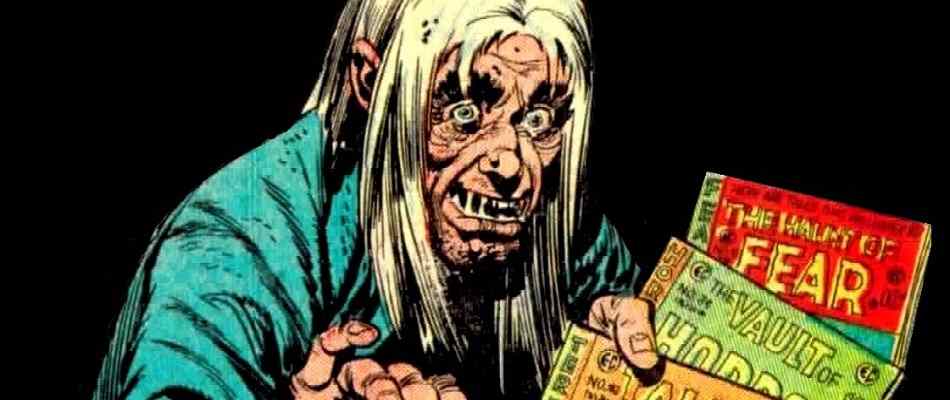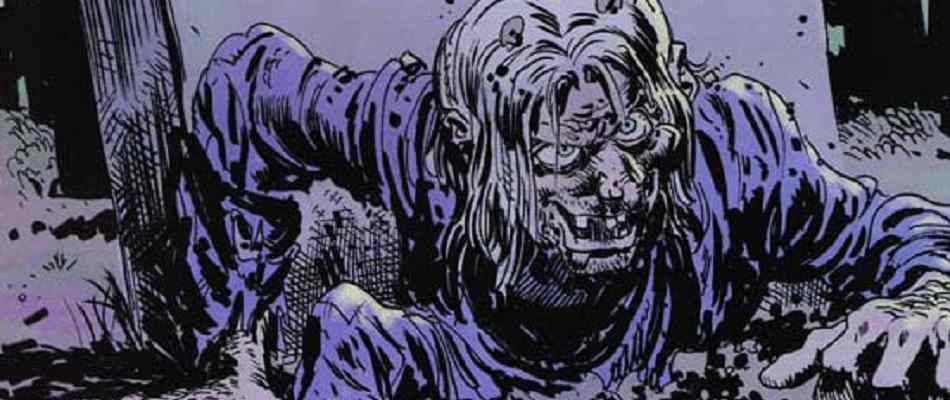When Max Gaines first began EC Comics in the 1940s, the ‘E’ stood for ‘Educational’, and the last things that he had on his mind were vampires, werewolves, and walking corpses. In fact, his premiere title was Picture Stories from the Bible, and he also sought to publish comics about science and history for the betterment of young children. Unfortunately, such things were not all that commercially viable, and when Max died in a tragic 1947 boating accident, his son William inherited a sinking ship of a company.
William attempted to carry on in his father’s tradition, but he changed the ‘E’ from ‘Educational’ to ‘Entertaining’, and in 1949 began to revitalize the brand by introducing a line of darker titles that covered horror, suspense, and science fiction. This really kicked off with Crime Patrol #15 (which had begun life as International Comics and undergone a series of name changes, a common practice at the time due to a bizarre postal regulation that made it more expensive to launch a new series rather than repurpose an older one). This issue (cover date December 1949/January 1950) featured a horror story amongst its crime tales entitled “Return from the Grave”, about a man who seemingly commits suicide and later rises from the grave for revenge, which was hosted by “The Keeper of the Crypt of Terror.” The same month, War Against Crime #10 featured a story entitled “Buried Alive”, which was hosted by the Vault-Keeper.
When Crime Patrol #16 hit the shelves, the Crypt-Keeper returned and the comic was essentially horror through and through. By the time issue #17 was released (April/May 1950) the title had changed to The Crypt of Terror. War Against Crime evolved in much the same way, becoming The Vault of Horror with #12 at the same time. It wasn’t long before The Haunt of Fear debuted with issue #15 (cover date of May/June 1950, blossoming from Gunfighter), though it curiously didn’t feature a host as its sister titles did. In the following issue, though, the Old Witch was introduced in a story entitled “The Mummy’s Return”. Muddying the numbering scheme even more, following the publication of issue #17, The Haunt of Fear’s issue numbering reverted backwards at the request of the post office (though I have been unable to locate an actual reason why), and what would have been #18 (actually the fourth issue under The Haunt of Fear title) was released as #4. This results in there being two issues #15, 16, and 17—the original three issues published, and those published some two years later.Once The Crypt of Terror changed its name to Tales from the Crypt with issue #20 (October/November 1950), the EC Comics brand and its trio of hosts were firmly established. Although each of the GhouLunatics (as they came to be known) had their own flagship title, each one shared hosting duties with the others throughout—meaning any given issue of a title may feature a story presented by the Crypt-Keeper, the Vault-Keeper, and the Old Witch. The Old Witch, who debuted later than her cohorts, may have been late to the party, but she received even more exposure than the others—she also appeared in the pages of Crime SuspenStories from issue #3 through #16. On special occasions, they acted as more than just the hosts of these tales, instead serving as the subjects, which must have been a special thrill for the younger readers.
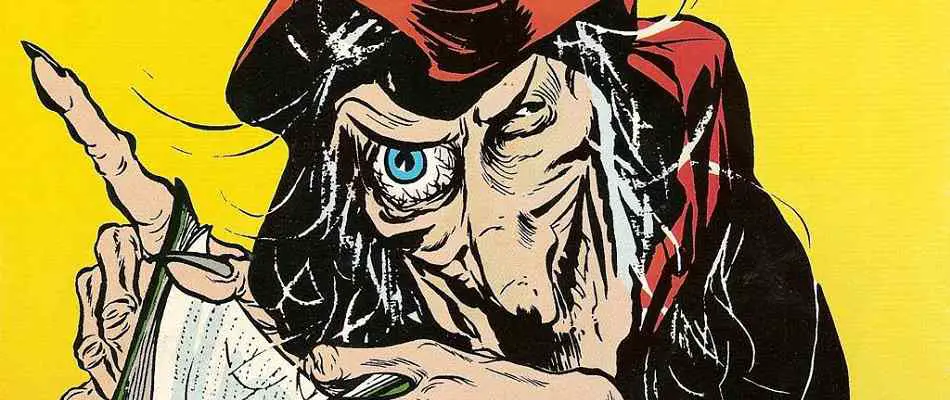 In “Horror Beneath the Streets” (Haunt of Fear #17, September/October 1950), we got to see how the GhouLunatics managed to land their gig at EC Comics; “A Little Stranger” (Haunt of Fear #14, July/August 1952) explained the origins of the Old Witch; Similarly, “Lower Berth” (Tales from the Crypt #33, December 1952/January 1953), a personal favorite, detailed the Crypt-Keeper’s birth; and “While the Cat’s Away” (Vault of Horror #34, December 1953/January 1954) gave us a peek inside the Crypt-Keeper’s living quarters.
In “Horror Beneath the Streets” (Haunt of Fear #17, September/October 1950), we got to see how the GhouLunatics managed to land their gig at EC Comics; “A Little Stranger” (Haunt of Fear #14, July/August 1952) explained the origins of the Old Witch; Similarly, “Lower Berth” (Tales from the Crypt #33, December 1952/January 1953), a personal favorite, detailed the Crypt-Keeper’s birth; and “While the Cat’s Away” (Vault of Horror #34, December 1953/January 1954) gave us a peek inside the Crypt-Keeper’s living quarters.
EC Comics enjoyed their heyday, but it lasted for less than five years. After pop psychiatrist Frederic Wertham published his book Seduction of the Innocent, which blamed comic books for juvenile delinquency, it lead to the creation of the Comics Code Authority (CCA), an organization of industry professionals that set standards and practices for comic book publishers. Unfortunately, these standards and practices seemed specifically designed to put EC’s top titles out of business. William Gaines resisted for as long as he could, but most distributors would not handle titles that did not have the CCA seal of approval, and newsstands would not sell them. By the beginning of 1955, he was forced to cancel all three horror titles and two crime titles, putting an early end to our GhouLunatics.
But just like characters from one of their comic book tales, they always return from the dead. Reprints from Ballantine Books beginning in 1964 proved that the interest was still there, and in 1972, British production company Amicus released their anthology film Tales from the Crypt. It featured five strangers touring an underground crypt who are confronted by the Crypt-Keeper and each one given a glimpse of their demise. The Crypt-Keeper (portrayed by Ralph Richardson) was very solemn and monk-like, and of the five stories that he told, two of them had been published in the Tales from the Crypt comic, while two others had come from The Haunt of Fear, and one from The Vault of Horror. Critical reception was positive, and it received a sequel the following year.
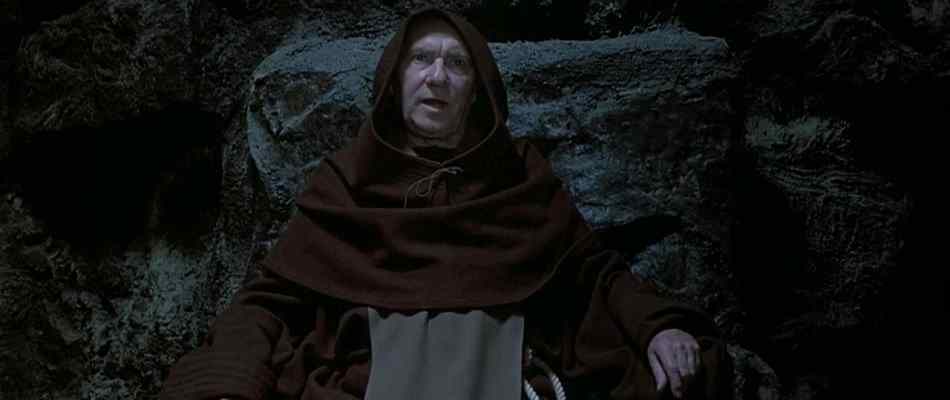 1973’s Vault of Horror did not feature a host at all, instead following five characters who each recount a nightmare. Four of these stories were adapted from issues of Tales from the Crypt, and one of them from Shock SuspenStories—strangely, none of them actually came from The Vault of Horror. Reception of this film was not as positive as its predecessor, and if a Haunt of Fear film was ever considered, it did not get made. Both films received the novelization treatment by Jack Oleck, which had a certain cache to them as Oleck had once written for EC comics.
1973’s Vault of Horror did not feature a host at all, instead following five characters who each recount a nightmare. Four of these stories were adapted from issues of Tales from the Crypt, and one of them from Shock SuspenStories—strangely, none of them actually came from The Vault of Horror. Reception of this film was not as positive as its predecessor, and if a Haunt of Fear film was ever considered, it did not get made. Both films received the novelization treatment by Jack Oleck, which had a certain cache to them as Oleck had once written for EC comics.
Aside from additional reprints from publisher Russ Cochran in 1979, the GhouLunatics retreated back into the grave until HBO began broadcasting their anthology show Tales from the Crypt June 10, 1989. Once again, the show was hosted by the Crypt-Keeper (a rather impressive puppet, voiced by John Kassir) who now took on the appearance of a living corpse. Many episodes were adapted freely from all three of EC’s horror titles, as well as Crime SuspenStories, Shock SuspenStories, and Two-Fisted Tales. It ran for seven seasons, ending on July 19, 1996 after airing its 93rd episode.
 It should be noted that, although not pertinent to the matter at hand, the success of Tales from the Crypt inspired HBO to try their luck with Perversions of Science in 1997, another anthology show—this time hosted by a sexy female robot named Chrome and based on stories that had been previously published in EC Comics’ Weird Science title. It failed to find an audience, though, and was canceled after only ten episodes.
It should be noted that, although not pertinent to the matter at hand, the success of Tales from the Crypt inspired HBO to try their luck with Perversions of Science in 1997, another anthology show—this time hosted by a sexy female robot named Chrome and based on stories that had been previously published in EC Comics’ Weird Science title. It failed to find an audience, though, and was canceled after only ten episodes.
The Vault-Keeper and the Old Witch were conspicuously absent from HBO’s Tales from the Crypt, but they did eventually make appearances on Tales from the Cryptkeeper. While a Saturday morning cartoon based on the franchise may seem like an unlikely proposition, ABC thought that by toning down the horror and making the Crypt-Keeper more kid-friendly, they might have a hit on their hands. It debuted on September 18, 1993 with an adaptation of the story “While the Cat’s Away”. In season two, the Vault-Keeper and the Old Witch were introduced as the Crypt-Keeper’s rivals who were always trying to steal his spotlight, but the inclusion of these characters were not enough to save the show from low ratings. It ended after the second season, but then returned as New Tales from the Cryptkeeper for one final season on CBS in 1999.
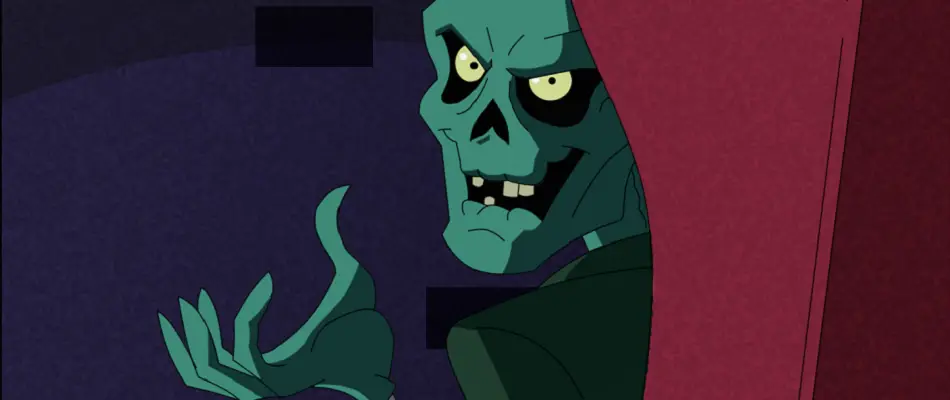 Unlikely as a cartoon counterpart to Tales from the Crypt is, the producers one upped themselves in 1996 with the premiere of Secrets of the Cryptkeeper’s Haunted House—a Saturday morning children’s game show that aired on CBS. Kassir’s Crypt-Keeper served as announcer, offering color commentary on the proceedings, in this live action absurdity that pitted teams of youngsters against physical challenges and trivia questions. A small amount of research will tell you that this was an Emmy Award-winning show, which would lead you to question why it only lasted a single season. Another small amount of research will tell you that it was a Daytime Emmy for “Outstanding Lighting Direction”—so at least you could clearly see how bizarre it all was.
Unlikely as a cartoon counterpart to Tales from the Crypt is, the producers one upped themselves in 1996 with the premiere of Secrets of the Cryptkeeper’s Haunted House—a Saturday morning children’s game show that aired on CBS. Kassir’s Crypt-Keeper served as announcer, offering color commentary on the proceedings, in this live action absurdity that pitted teams of youngsters against physical challenges and trivia questions. A small amount of research will tell you that this was an Emmy Award-winning show, which would lead you to question why it only lasted a single season. Another small amount of research will tell you that it was a Daytime Emmy for “Outstanding Lighting Direction”—so at least you could clearly see how bizarre it all was.
In 1995, the first of what would ultimately be three new feature films debuted. Demon Knight, about a man being hunted by a demon known as the Collector, showcased an artifact in the shape of a key that contained the blood of Jesus Christ. Bordello of Blood, which was released the following year, took place in a brothel full of vampires and also featured the key. The third film, Ritual, made no mention of the artifact, however. In fact, for a while it didn’t even make mention of the fact that it was a Tales from the Crypt film. Due to lack of interest in the now-defunct franchise, Ritual was all but scrapped. It released theatrically in foreign territories in 2002, but all references to the franchise (including the scenes with the Crypt-Keeper) were excised. It wasn’t until the American DVD release in 2006 that these references were restored. Not that there was much of anyone left paying attention at that point.
 The year 2000 signaled the future for most people, but for Tales from the Crypt, it signaled a return to the past. Although the series was four years gone at this point, the franchise hearkened back to the days of old time radio shows like Suspense and Lights Out, and eight (out of a proposed eleven) episodes of a Tales from the Crypt radio program were recorded and released for free streaming on the Sci-Fi Channel website, and made available for purchase on CD. Each of these was based on a story that had previously appeared in Tales from the Crypt or Vault of Horror comic books.
The year 2000 signaled the future for most people, but for Tales from the Crypt, it signaled a return to the past. Although the series was four years gone at this point, the franchise hearkened back to the days of old time radio shows like Suspense and Lights Out, and eight (out of a proposed eleven) episodes of a Tales from the Crypt radio program were recorded and released for free streaming on the Sci-Fi Channel website, and made available for purchase on CD. Each of these was based on a story that had previously appeared in Tales from the Crypt or Vault of Horror comic books.
Over the course of its 65 year existence, Tales from the Crypt and its associated products have gone through countless ups and downs in popularity. The period in which it existed as an HBO program was arguably when it was at its peak, resulting in not only the assorted spinoffs previously mentioned, but also an array of merchandise that is highly sought after by collectors these days: a pinball game; a series of action figures, dolls, figurines, and statues; a board game; trading cards; assorted decorations; a handheld video game; a tabletop role playing game; and even music albums, among them one where the Crypt-Keeper sings Christmas carols. The more popular a franchise, the stranger the merchandising opportunities become.
In 2007, indie publisher Papercutz purchased the rights to the Tales from the Crypt line and began publishing new comic book stories for the first time since the title was initially driven out of business, this time aimed directly at a young audience. All three of the GhouLunatics were present in the series which produced 13 issues and 9 collections (which also featured material not originally found in the comics). The final issue was published in 2009, and things have been quiet on the Crypt-Keeper front ever since, but I have a feeling that we haven’t seen the last of him or his gruesome little friends.
As the Crypt-Keeper himself would likely say, you can’t keep a good ghoul down!

